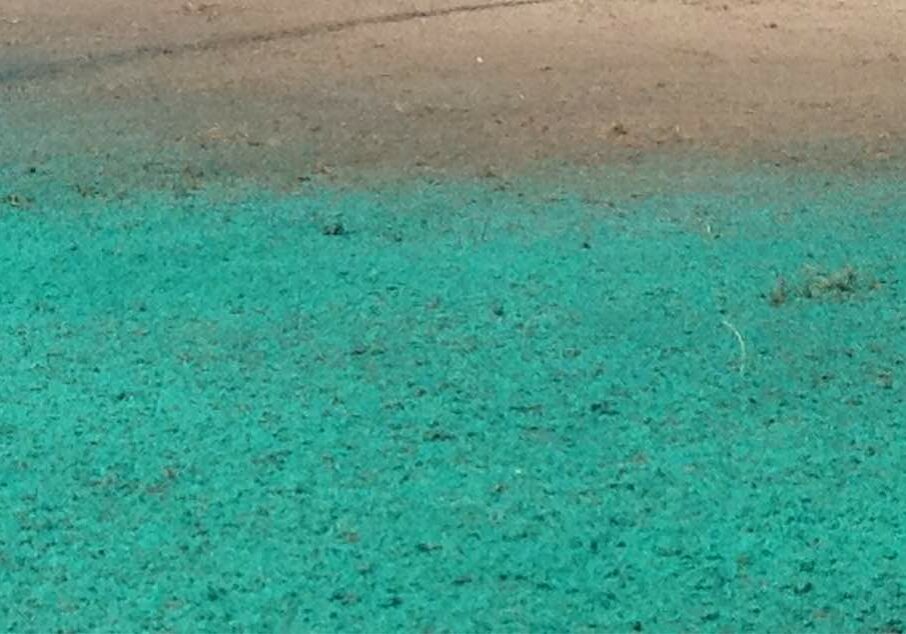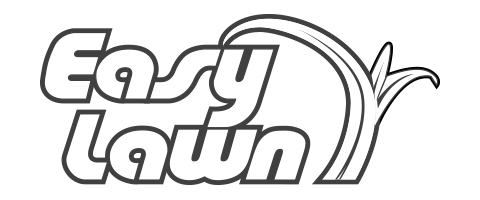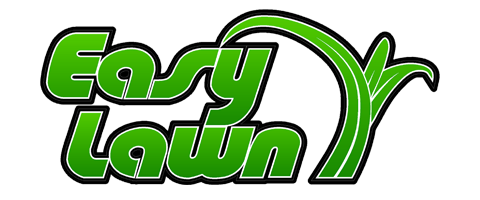Customizing Hydroseed Mixtures

Share this article!
When customizing a hydroseed mixture, it’s important to consider factors like the soil, terrain, and seed types you’ll be working with. Different hydroseed mixtures and ratios will establish and grow better in different conditions, so selecting the right one from the outset can lay the foundation for a healthy, lush-looking lawn.
For example, if you are dealing with sandy soils, a custom hydroseed mixture that contains lighter soil amendments like perlite or vermiculite can help the seeds establish well and set the plants up for long-term success in your specific climate and soil conditions. If you’re looking to seed in an area with a more clay-based soil, creating a hydroseeding mixture with added mulch or leaf mold can help balance out the soil conditions to help seeds take well. Because every lawn area is unique, using a custom or DIY hydroseed mix can offer the best benefits for your hydroseeding projects.
Additives for Hydroseed Mixes
There are a variety of additives to choose from to customize your hydroseed mix or slurry. Strategically using different types of mulch, fertilizers, soil boosters, tackifiers, and other amendments, can help you get the most out of your seeds and soil.
In order to make the best decisions for your area, it’s important to understand your soil type, terrain, and overall climate. This understanding will help you decide on fertilizers as well as additives like tackifiers and mulch, which can be used to support growth and establishment on steep slopes or areas where runoff is a concern.
Mulch
Mulch is commonly used in hydroseed mix because it helps retain moisture and protects seeds from environmental concerns like erosion, over-drying from sun exposure, wind dispersal, and pests. In addition, the right type of mulch can help ensure that new grass takes root well, and sets seeds up for long-term vibrancy.
Paper Mulch
Paper mulch is created from recycled paper products and serves to help retain moisture in the hydroseed area, while also helping protect seeds from other environmental factors like over drying in the sun, blowing away in the wind, or being eaten or disturbed by wildlife.
Paper mulch is often one of the more affordable options for mulch, so it can be a great entry-level mulch for areas that don’t require too much maintenance. An important consideration is that paper mulches generally don’t retain moisture as well as wood and wood-fiber mulches, so if the area has erosion, irrigation, or runoff issues, paper mulch may not be the best choice.
Blended Mulch
As its name implies, blended mulches are mixtures of different types of mulches (such as paper/wood-fiber blends) designed to give you a versatile mulch mixture that can be tailored for the specific soil, terrain, and grass seed type you’ve chosen.
As a result, blended mulches are ideal for projects where a single material mulch alone would not be able to provide the desired results. For example, blended mulches make a great choice for high-traffic areas like sports fields, where the mulch can be customized to withstand heavy usage.
Wood Mulch
Wood mulch is made from wood byproducts, and is generally the most heavy duty and protective of the mulches. Wood mulches are often used in areas where slope stabilization or runoff are key concerns. The weight of the wood mulch helps the hydroseed mix stay in place, even in steeply-sloped areas, and can help prevent runoff and erosion effectively. Wood mulches also retain water much more effectively than paper mulches, which is another characteristic that makes them ideal for slopes and steep terrain.
It’s important to note — wood mulches should not be used in jet-agitated hydroseeders, but can be used in mechanical hydroseeders.
Fertilizers
Using the right fertilizers in a custom hydroseed mix can help seeds establish well, and quickly. The right fertilizer for your custom hydroseed mix should account for the specific soil, terrain, and seed types you’ll be using, since this will quite literally lay the foundation for the growth and establishment of your seeds.
In general, most available fertilizers can be used in a custom hydroseed mix, however some fertilizer additives, like nitrogen, can be corrosive to metal hydroseeder components so it will be important to clean the hydroseeder well if using this type of machinery. High-phosphorus fertilizers can make a good starting point for typical soil, and balanced fertilizers like a 19-19-19 can also work well. Test your soil and learn about the area’s environment and your desired seeds so you can match an appropriate fertilizer for the soil and the seed before beginning the hydroseed project.
Tackifiers
Tackifiers are chemicals that help the hydroseeding process in two ways:
- tackifiers make the slurry easier to apply because they help bind the slurry together, and
- they help the slurry stay in place once applied.
As important components of effective custom hydroseeding mixtures, tackifiers should be chosen carefully to match the area and its environment. The specific tackifier used can be determined by the surface tension of the slurry, as well as its desired consistency and stickiness. Commonly-used tackifiers include guar gum or xanthan gum, and are applied roughly at 25 lbs- 30 lbs per acre for a typical 335 gallon hydroseed tank.
Herbicides
Some herbicides can be used in a hydroseeding mix to reduce competition from weeds or other undesired plant species in the area. Select herbicides can also help improve grass or crop density, and overall quality of the grass itself.
Herbicides should be selected based on their effectiveness against common weeds in the environment, and should be applied according to provided instructions for volume and ratio to seeds, water, and mulch. Many large grassy areas struggle to compete with undesirable species like crabgrass, nutsedge, and broadleaf weeds, so targeted herbicides can be a great way to customize your hydroseed slurry to reduce the potential for these competing plants to establish along with your seeds.
Biostimulants
Biostimulants are a group of naturally-derived growth stimulants that can help new grasses or crops establish in their environment, with the goal of improving growth, durability, and longevity of the plant. These additives work to accelerate seed germination, and help establish a strong root structure of the plant. This not only supports the plant itself, but helps to reduce erosion and soil degradation in the process.
Biostimulants like Nitrozyme, Vitazyme, or Genesis can be used to help improve soil health and support effective plant growth, and should be applied according to the provided instructions which can vary by product. As with other hydroseed mix additives, it’s important to consider your specific soil composition, as well as the seeds you’ll be using to make sure they’re compatible with any biostimulants that may be called for by the unique needs of the environment.
Lime
Lime is a hydroseeding slurry additive generally used to adjust soil pH, as many grasses prefer soil with a pH range from 6.0 to 7.0. A soil test can determine what your specific soil pH is, and whether lime would be helpful for grass seeds to thrive in the area.
It’s important to note that raw lime is especially abrasive, and generally not recommended for use in a hydroseeder. Instead, look for versions like Liquid Lime that are less problematic when used in hydroseed slurry, or consider adding lime separately after you’ve applied hydroseed slurry.
Other Additives
Depending on your soil type and seed choice, you may want to customize your hydroseed mix even further. For example, additives like humic acid, a negatively charged acid that holds positively charged nutrients in the soil, can help support plant growth by improving the soil quality. Gibberellic acid is a hydroseeding additive that encourages quicker germination of turfgrass seeds, so it can be very useful when seeding those kinds of plants. Certain kinds of beneficial bacteria can also be added to the slurry to support essential soil microbe activity, which leads to a general improvement in soil health and viability.
Co-Polymer Gels can also be added to decrease watering needs in arid areas or other environments where seeds may not get frequent or regular watering.
Typical Ratios for Hydroseed Mixtures
The ratios of components you’ll need for your area varies by the terrain. For example, a steep slope may need a slurry that’s about the consistency of a milkshake, while a flat area’s optimal slurry may be much more runny.
To mix your custom hydroseed slurry, begin by adding the water to the tank — about halfway full — then follow it with seeds, then mulch, and lastly fertilizers and any additives. For an average hydroseeding job in an average environment, and assuming a typical 335 gallon hydroseed tank, the proportions of mulch, fertilizer, seeds, and water are:
- Seed: 20 lbs
- Fertilizer: 25 lbs
- Mulch: 120 lbs
Generally, as you go up in tank size, the ratios of materials should also increase. Always read the instructions on your materials, but in general, seeds and fertilizer should be around the same amount, with about 4-5 times as much mulch. For a 600 gallon capacity machine, for example, the ratio would look something like this:
- Seed: 45 lbs
- Fertilizer: 50 lbs
- Mulch: 250 lbs
A larger 1,500 gallon working tank capacity machine might need a ratio more like this:
- Seed: 130 lbs
- Fertilizer: 150 lbs
- Mulch: 750 lbs
Always read the instructions for seeding provided with any products you use to ensure the best results and most effective ratios.
Considerations for DIY Hydroseed Mixes
The most important considerations for custom and DIY hydroseed mixes are the environment where you’ll be planting, the soil, the seeds, and the specific hydroseed machine you’ll be using.
Terrain
The type of terrain is key when considering your custom hydroseed mix. Steep slopes can come with their own challenges like erosion and runoff, where in flat areas, irrigation and pooling can be concerns. Any areas near waterways also need to be carefully considered and monitored, as additive runoff from the area can potentially contaminate the water supply.
For steep slopes, tackifiers are key, and in some cases co-polymer gel additives can help retain water in the soil, supporting the work of a wood blend mulch. Assessing drainage is also important, as areas that retain water run the risk of drowning seeds or redistributing them haphazardly, resulting in inconsistent growth.
Soil Characteristics
Is the soil loamy, silty, sandy, or clay-like? Each type of soil requires a different approach and might require different types of fertilizers or additives. Do your homework before you begin to create your hydroseed mix — so you know ahead of time if your soil’s pH will need amending, or if you’ll need certain nutrient-boosting fertilizer to help your seeds get a good start.
Seed Characteristics
Some grass seed types can grow well in a variety of soil types and environments, while others struggle in shady areas, or with too much sand in the soil. Once you’ve learned about your soil type and observed the greater environment’s climate, you can make an educated decision about what types of seeds, or combination of seeds, might establish well in the specific conditions.
Hydroseed Machine Type
There are two types of hydroseeders available, each with their own characteristics that can help you decide how to customize your hydroseed mix:
Jet Agitation
Jet agitation hydroseeders use jets to mix the hydroseed slurry in the tank. This process is great for soluble, light-weight mulches like paper mulch and some paper/wood blends. Jet agitation machines tend to be smaller and more maneuverable, and can typically handle small to mid-sized hydroseeding jobs.
Mechanical Agitation
Mechanical agitation hydroseeders use large paddles in the hydroseed tank to mechanically break up mulch and keep the slurry moving during mixing and application. These paddles can handle heavier mulches like wood and wood-fiber blends. Mechanical agitators are often used for larger hydroseed jobs that need to cover very large areas quickly.
Custom Hydroseed Mixes Can Set Your Project Up For Success
Once you’ve considered factors like the soil, terrain, additives, machinery, and seed types, you’ll be in a great position to create a custom hydroseed mixture that gets the results you’re looking for. And from tackifiers, to fertilizers to mulch, our Easy Lawn pros can help you find the right answers.

